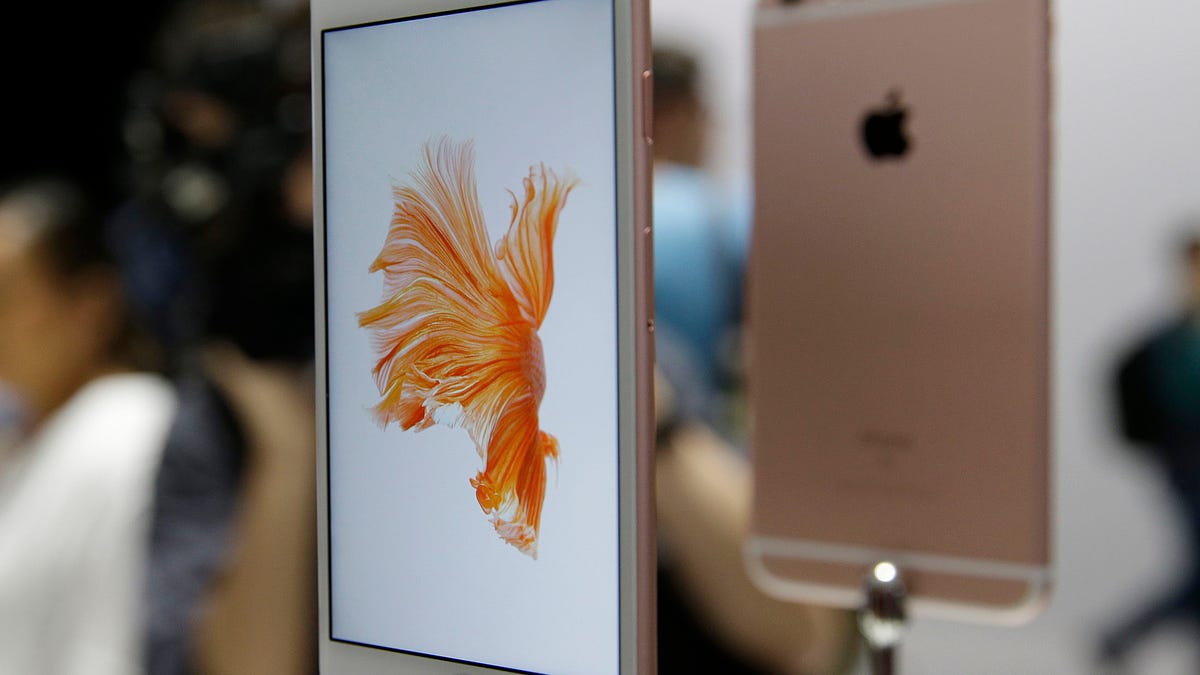
In this Sept. 9, 2015 photo, people look over the new Apple iPhone 6s models during a product display following an Apple event in San Francisco. (AP Photo/Eric Risberg)
While the iPhone 6S looks the same as the iPhone 6, there are changes that will impress but probably not cause everyone to dash out and get one, according to the initial batch of reviews.
Let’s start with the things that matter to most users: battery life, performance, and the camera.
Battery life: this got a thumbs-down pretty much across the board because there is no appreciable improvement and potentially some decline.
“The battery life of the iPhone 6S leaves a lot to be desired,” according to a write-up at Techradar, echoing other reviews. The problem is that Apple has added some features to the 6S that in some scenarios can subtract battery life (when certain new processor-intensive features are used).
Performance: Lots of upside here. The iPhone 6S is noticeably faster thanks to a quicker processor, extra RAM (now 2GB, up from the longstanding 1GB), and a more responsive Touch ID fingerprint sensor.
“Exporting an HD video was three times as fast [as the iPhone 6], scrolling through Facebook and Web pages was smoother and jumping between tons of open apps felt noticeably quicker,” according to a Wall Street Journal review. And unlocking the 6S via the fingerprint senor is instantaneous – not the case with previous-generation 6 and 6 Plus.
Camera: the iPhone has a reputation for consistently delivering the best photos. While Apple has dutifully upgraded the rear camera by going to 12 megapixels from 8, the biggest change is the front-facing selfie camera. That goes to 5 megapixels from a paltry 1.2 megapixels and now comes with flash that works by amping up the brightness of the display by 3X (what Apple calls Retina Flash).
“Apple's been way behind the curve with its front-facing cameras,” according to The Verge, adding that improvement in quality from the iPhone 6 to 6S is “tremendous” and that the photos are realistic and not the low-quality “pixelated approximations” of past cameras. There isn’t a corresponding leap in quality with the rear camera, however. Despite that camera’s additional pixels, most reviews said differences are small. The Verge wrote that the results “aren’t dramatically better” than the iPhone 6.
Both the front and rear cameras can take Apple’s new Live Photos too, which records 1.5 seconds of action before and after your shot. Some reviewers were wowed, others not. The Verge called it "fun" but "a little gimmicky."
3D Touch: This is new and is analogous to Force Touch technology used on the Apple Watch, 12-inch Retina MacBook, and MacBook Pro. Depending on how much pressure is applied to the display, different actions are triggered. Quick Actions, a shortcut for accessing homescreen apps, and “Peek” and “Pop”, which let you preview content and quickly open the app, are welcome enhancements, according to The Telegraph. For example, with a light press you can Peek at each email in your inbox. Then when you want to open a specific message, press a little deeper to Pop into it.
“Anything which abbreviates the process of switching between apps…is a good thing,” the Telegraph writes.
Design: The 6S is a little heavier (about 11 percent), slightly thicker, and made from a stronger grade of aluminum. Some reviewers noticed the weight difference, others didn’t. The biggest downside, as stated at the top, is that it looks identical to iPhone 6. That said, Apple has never offered an S series of iPhone that looks different than its predecessor.
The upshot: Snappier performance, better selfie photos, an improved rear camera, and quick access to apps will make it a worthy upgrade for die-hard iPhone fans but it's probably not the must-have upgrade for the average user perfectly satisfied with their current iPhone 6.




















